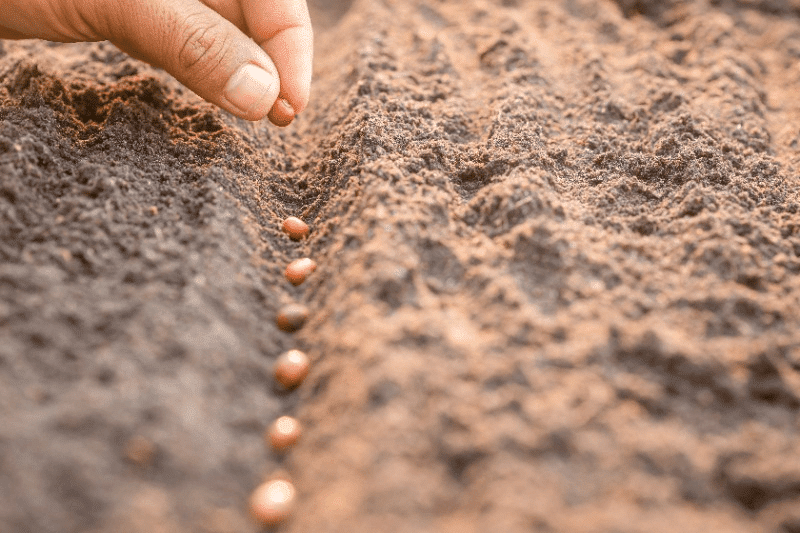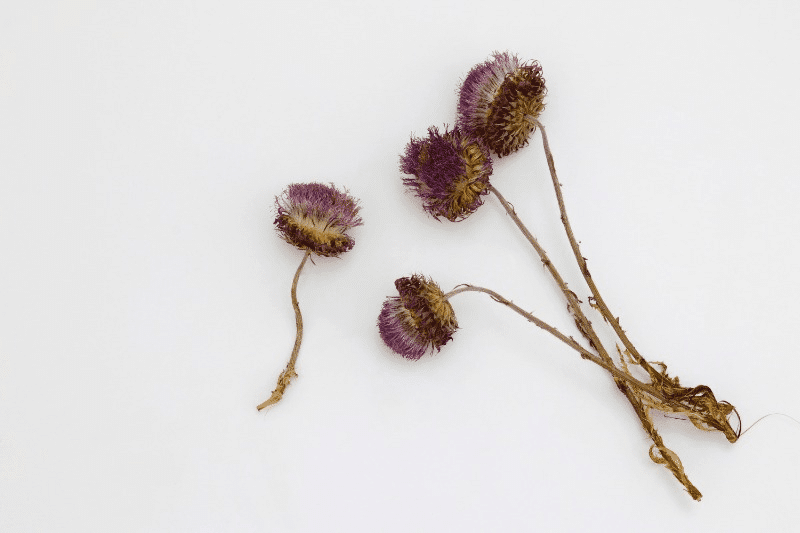Key Takeaways
- Choose a sunny location with well-drained soil to grow milk thistle successfully.
- Plant milk thistle seeds in the early spring and moisten the soil until the seeds germinate.
- Provide young milk thistle plants with regular watering and protection from strong winds.
- Encourage milk thistle flowering by deadheading spent blooms and providing adequate sunlight.
- Harvest milk thistle seeds when fully ripe, and dry them thoroughly before storage or use.
- Milk thistle offers medicinal benefits, including liver support and antioxidant properties, making it a valuable addition to your herbal remedies.
Here goes, how to grow milk thistle! Want a cool garden plant that looks good and is good for you, too? Milk thistle is the one! It’s pretty, fun, and it’s healthy. This guide will tell you about growing milk thistle, from planting the seeds to picking the harvest. Growing this tough herb is fun whether you’re a pro gardener or just starting. Let’s find out how to grow milk thistle.
Selecting the Right Location and Soil for Milk Thistle
Sunny Location
Milk thistle thrives in a sunny location, so when selecting a spot to plant it, make sure it receives plenty of sunlight. If you’re growing it indoors, this could be in your garden or a sunny windowsill.
Well-Draining Soil
The soil where milk thistle is planted should have good drainage to prevent waterlogging. To ensure this, consider using soils with optimal germination conditions and avoid heavy clay soils that retain too much water.
Neutral to Slightly Acidic pH
When choosing the soil for milk thistle, look for one with a neutral to slightly acidic pH level. This will provide the ideal conditions for the plant’s growth and development. You can test the soil’s pH using a simple kit available at garden centers.
Raised Bed or Container Planting
Consider planting milk thistle in a raised bed or container for better control over the growing environment. This allows you to customize the size of the planting area and adjust soil conditions as needed. It also works well if you have specific soil requirements for optimal growth.
Planting Milk Thistle Seeds Step-by-Step

Sowing the Seeds
To grow milk thistle, begin by sowing the seeds directly into the ground in early spring or late summer. Choose a location with well-draining soil, as discussed in the previous section. When you’re ready to plant, sow the seeds about 1/4 inch deep and keep them approximately 12 inches apart.
Gently water the seeds after they are in place. This will help initiate their growth process and ensure enough moisture to sprout. Remember that milk thistle doesn’t like overly wet conditions, so be careful not to overwater.
Remember:
- Sow seeds directly into the ground in early spring or late summer
- Plant seeds 1/4 inch deep and 12 inches apart
- Water the seeds gently after planting
Patience is Key
Growing milk thistle requires patience as it takes time for these plants to establish themselves and grow tall with vibrant flowers. After following all these steps, continue nurturing your plants by regularly watering them and ensuring they receive adequate sunlight.
It’s important to note that while milk thistle can thrive on neglect once established, it needs attention during its initial growth stages.
Caring for Young Milk Thistle Plants
Soil Moisture Management
When growing milk thistle, keeping the soil consistently moist is crucial without overwatering. Overly soggy conditions can lead to root rot, affecting the plant’s health. Maintaining optimal moisture levels provides a conducive environment for young milk thistle plants to thrive and develop robust roots.
Monitoring the soil regularly and water when necessary, ensuring it doesn’t dry out completely is important. This will support healthy growth and help establish sturdy young plants.
Seedling Thinning
Thin out seedlings as they grow to ensure proper spacing between the plants. This practice prevents overcrowding, which can hinder their growth due to competition for nutrients and sunlight. Removing excess seedlings allows ample space for each plant to flourish without being stunted by its neighbors.
Carefully thinning the seedlings also promotes good air circulation around the remaining plants, reducing the risk of diseases caused by damp conditions or poor ventilation.
Wind Protection
Young milk thistle plants are vulnerable to damage from strong winds. Shield them from such elements by providing a windbreak in their vicinity. This could be achieved using structures like fences or planting taller vegetation nearby that acts as a natural barrier against wind gusts.
Recognizing and Encouraging Milk Thistle Flowering
Identifying Mature Milk Thistle Plants
Mature milk thistle plants can be identified by their distinctive spiky leaves. These leaves are deeply lobed, glossy, and have white marbling. When the plant matures, it develops a large rosette of these characteristic leaves, making it easy to recognize.
Milk thistle is known for its vibrant purple flowers, which bloom in late spring to early summer. The flowering stems can grow up to 5 feet tall and are adorned with eye-catching pink or purple flower heads. As the plant grows, its unique appearance becomes more apparent, making it easier to spot in a garden or natural setting.
Encouraging Optimal Flowering
Deadheading spent blooms are crucial to encourage milk thistle plants to bloom abundantly. Deadheading involves removing faded or wilting flowers from the plant. This practice maintains the plant’s aesthetic appeal and redirects energy into producing new blooms instead of seed production.
Another essential factor for optimal flowering is providing adequate sunlight. Milk thistle thrives in full sun exposure, receiving at least six hours of direct sunlight daily. With ample sunlight, the plants will produce robust flower heads that attract pollinators such as bees and butterflies.
Harvesting and Drying Milk Thistle

Harvesting Seeds
When the milk thistle seeds turn brown and loosen from the flower head, it’s time for harvesting. Pluck the mature seed heads from the plant.
After harvesting, hang the plants upside down in a dry, well-ventilated area. This will allow them to air-dry naturally.
Drying and Storage
Once dried, remove the seeds from the flower heads by gently rubbing or threshing them. It’s important to ensure that they are completely dry before storage.
Place the dried milk thistle seeds in an airtight container for proper storage. Store this container away from direct light and heat to maintain its potency over time.
In addition:
- Harvested milk thistle can be used for various purposes, such as culinary use or extraction of silymarin.
- Proper drying is crucial to prevent mold growth on stored seeds.
Medicinal Uses and Benefits of Milk Thistle
Liver-Supporting Properties
Milk thistle, a medicinal plant, is renowned for its potential to support liver health. Its active ingredient, silymarin, has been studied for its ability to protect the liver from toxins and promote the regeneration of liver cells. This makes milk thistle a popular natural remedy for various liver conditions such as hepatitis, cirrhosis, and even damage caused by alcohol or drug abuse.
The traditional use of milk thistle as a natural remedy for digestive issues dates back centuries. Its anti-inflammatory properties can help soothe the digestive system and alleviate symptoms associated with indigestion, bloating, and constipation. Many people have turned to milk thistle supplements or teas to aid in overall digestive wellness.
Antioxidant Effects
One of the key benefits of milk thistle is its potent antioxidant effects. Antioxidants are essential in combating oxidative stress caused by free radicals in the body. By neutralizing these harmful molecules, antioxidants contribute to overall well-being and may reduce the risk of chronic diseases such as heart disease and cancer.
In addition to its antioxidant properties, milk thistle exhibits anti-inflammatory effects that can benefit various systems within the body. These dual actions make it an attractive option for those seeking natural ways to support their health.
Preparing and Enjoying Milk Thistle Tea
Grinding Dried Milk Thistle Seeds
To begin the process of making milk thistle tea, start by grinding the dried milk thistle seeds. The grinding helps to release the beneficial compounds present in the seeds. You can use a mortar and pestle or a coffee grinder to achieve a fine consistency for better extraction during brewing.
Once you have ground the seeds, it’s time to move on to steeping them in hot water.
Steeping Process and Flavor Enhancement
After grinding the seeds, take a pot or kettle and bring water to a boil. Once it’s ready, pour it over the ground milk thistle seeds. Let this mixture steep for about 20 minutes. This allows enough time for all those valuable seed nutrients to infuse into your tea.
If you prefer your tea with added flavor, consider incorporating honey or lemon once you’ve finished steeping. These additions enhance taste and provide their own health benefits that complement milk thistle.
- Grind dried milk thistle seeds
- Steep in hot water for 20 minutes
- Add honey or lemon for flavor if desired
Understanding the Potential Risks of Milk Thistle
Allergic Reactions
Milk thistle can pose potential risks for individuals with ragweed allergies. When considering its use, it’s important to be aware of the possibility of allergic reactions. If you have a history of ragweed allergies, it’s crucial to exercise caution and consult with a healthcare professional before incorporating milk thistle into your routine.
Milk thistle may cause allergic reactions in some individuals, especially those sensitive to ragweed pollen. This is an essential point to remember when exploring the option of using milk thistle as a supplement or herbal remedy.
Interaction with Medications
Before integrating milk thistle into your wellness regimen, it’s imperative to acknowledge that this herb may interact with certain medications, such as blood thinners. Consulting with a healthcare professional is vital, particularly if taking medications or undergoing medical treatments.
It’s crucial for individuals using blood thinners or other specific medications to recognize that milk thistle could potentially interact adversely with their prescribed drugs. Seeking guidance from a healthcare provider is paramount in ensuring safe and effective usage.
Summary
Awesome! You’ve learned how to grow and use milk thistle. Pick a good spot, plant the seeds right, and know when it should bloom. Also, learn about its health benefits and risks. Then, make and drink milk thistle tea to enjoy its good effects on your health.
Ready to embark on your milk thistle journey? Get your hands dirty, tend to your plants with love, and reap the rewards of this ancient herbal remedy. Happy growing!
Frequently Asked Questions
How do I select the right location and soil for growing milk thistle?
To grow milk thistle, choose a sunny spot with well-draining soil. It thrives in dry, poor soils, similar to its wild habitat. Avoid overly rich or moist soil.
Can I Use Milk Thistle for its Benefits if I Grow It at Home?
Yes, you can indeed use milk thistle for its benefits if you grow it at home. The benefits of milk thistle include its ability to support liver health, reduce inflammation, and provide antioxidant effects. Growing it at home ensures you have access to fresh, high-quality milk thistle for your health needs.
What are the steps for planting milk thistle seeds?
After the last frost, plant milk thistle seeds 1/4 inch deep in well-draining soil. Keep the area moist until seedlings emerge, then thin them to about 18 inches apart.
How should I care for young milk thistle plants?
Water young plants regularly, but avoid overwatering. Protect them from strong winds and provide support well cared for as they grow tall.
How can I recognize and encourage milk thistle flowering?
Milk thistle flowers have vibrant purple heads that are hard to miss. To encourage flowering, ensure your plant receives plenty of sunlight and continues to be well cared for.
When and how should I harvest and dry milk thistle?
Harvest matured seeds when they turn brown before they start falling off naturally. Dry them by laying them out on a screen or paper towels in a warm, airy place.
What are some medicinal uses and benefits of consuming milk thistle?
Milk Thistles’ active compound silymarin is known for its liver-protective properties. It’s used as a natural remedy for various liver conditions like cirrhosis and hepatitis.
How can I prepare and enjoy milk thistle tea?
To make milk thistle tea, steep crushed or ground seeds in hot water for around 20 minutes before straining it into cups. Add honey or lemon if desired.

